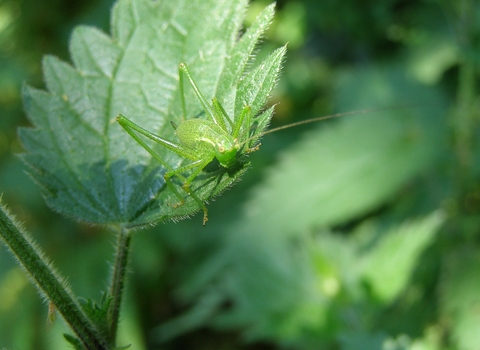
Speckled Bush-cricket ©David Longshaw
Speckled bush-cricket
The Speckled bush-cricket, as its name suggests, is covered in tiny, black speckles. It can be found in scrub, hedgerows and gardens throughout summer. Males rub their wings together to create a 'song' for the females.
Scientific name
Leptophyes punctatissimaWhen to see
May to NovemberSpecies information
Category
Statistics
Length: 0.9-1.8cmCommon.
